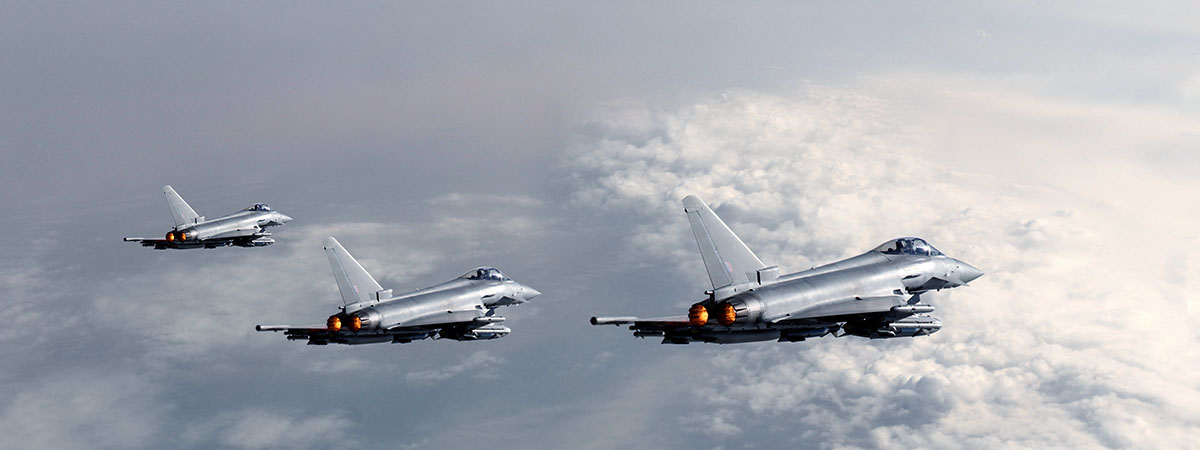On December 21, Italian and Swedish Defence Ministers and the United Kingdom’s Secretary of State for Defence signed a trilateral Memorandum of Understanding to formalise cooperation in the development of the new TEMPEST program, aimed at developing a future air combat system. This program includes the design and manufacturing of a new generation fighter aircraft soon to replace the Eurofighters in Italy and the UK and the Gripen in Sweden.
Defence policy has always been a strategic value for nations and one of its current pillars is a technologically advanced, effective air combat system.
This announcement came just a few months after France, Germany and Spain took one step forward in the development of the Next Generation Weapon System (NGWS) programme, formalizing the beginning of Phase 1A which marks the de facto beginning of work on the different technological pillars that make up the global system.
In terms of efficiency of resources, it is possible that for many readers this duplication of initiatives exclusively involving European countries is difficult to understand using purely economic-industrial criteria. However, diverse factors play an equal or even greater role than pure efficiency for making a decision that commits a large part of a country’s – or group of countries’ – defence resources for many decades.
In recent months we have lived through a time of great sanitary penalties, but going back in time, it is possible we are facing the most politically turbulent time since overcoming the 20th century dispute between two traditional military blocks. Now we are living in a Europe that has suffered a very hard blow from the torturous Brexit process. It will be a long time before the dust settles on a new relationship between the UK and Europe and we can make a quantitative analysis of the effects on the region’s politics and economy of such an important partner’s exit.
The United States, on one hand, toughened its foreign policy during the last presidency, which has not been much help in maintaining stability at the global level. On the other hand, China is beginning to suffer the same problems that capitalist economies experienced years ago due to restrictive tariff policies the rest of the world is applying to its products. And meanwhile, Russia, the Middle East and South American continue to be relatively unstable regions in many respects. We are living in times that are more agitated than the world has seen in decades.
Defence policy has always been a strategic value, which every nation, on its own or integrated into supranational organisations, has tried to use to maintain or increase its position of relevance in the world. As part of this superiority game, we have the announcement of this trilateral agreement, and then afterwards the launch of the large Defence programmes which periodically seek to advance the operative capabilities of each country in order to respond adequately in case of conflict. Currently, one of these large programmes is the development of these new air combat systems which revolve around the development of new generation fighters, in other words, combat systems that incorporate high capability electronic warfare, advanced artificial intelligence systems, low observable technologies (LO technologies), use of mixed reality in vision systems, integration of unmanned vehicles or decentralized command and control capability. These new aircraft are forecast to be available for service very soon, starting in 2040.
In recent years, some countries have announced the launch of new investments, with different degrees of intensity, focused on these new-generation programmes. However, in recent months these moves have greatly increased. The United States with its Next Generation Air Dominance, as well as China, working on the Chengdu J-20’s successor and Russia with its new MiG-41 have all confirmed their intentions of equipping fighters with these new capabilities as soon as possible. It’s true that each of these initiatives is currently at different degrees of technological maturity, but all are advancing little by little firmly, and with determination. In this context, this time Europe, with France in the lead, is reacting in time, seeing the importance of quickly taking a position of technological leadership of the development of these key systems for strategic preponderance in Europe during the second half of this century.
When asked about a possible integration of both programmes in the future, answers from each side are diametrically opposed. On one side, Airbus Defence and Space CEO Dirk Hoke, says that “Keeping both programmes in Europe could be a bad solution for both the UK and the EU, repeating the mistakes of the 1990’s when Europe developed three combat planes in parallel: Eurofighter, Gripen and Rafale”. On the other side, the UK is talking about how the duality of the programmes adds a degree of competitive pressure on industries without creating a monopoly on the supply of combat planes.
Only time will tell who is right.



